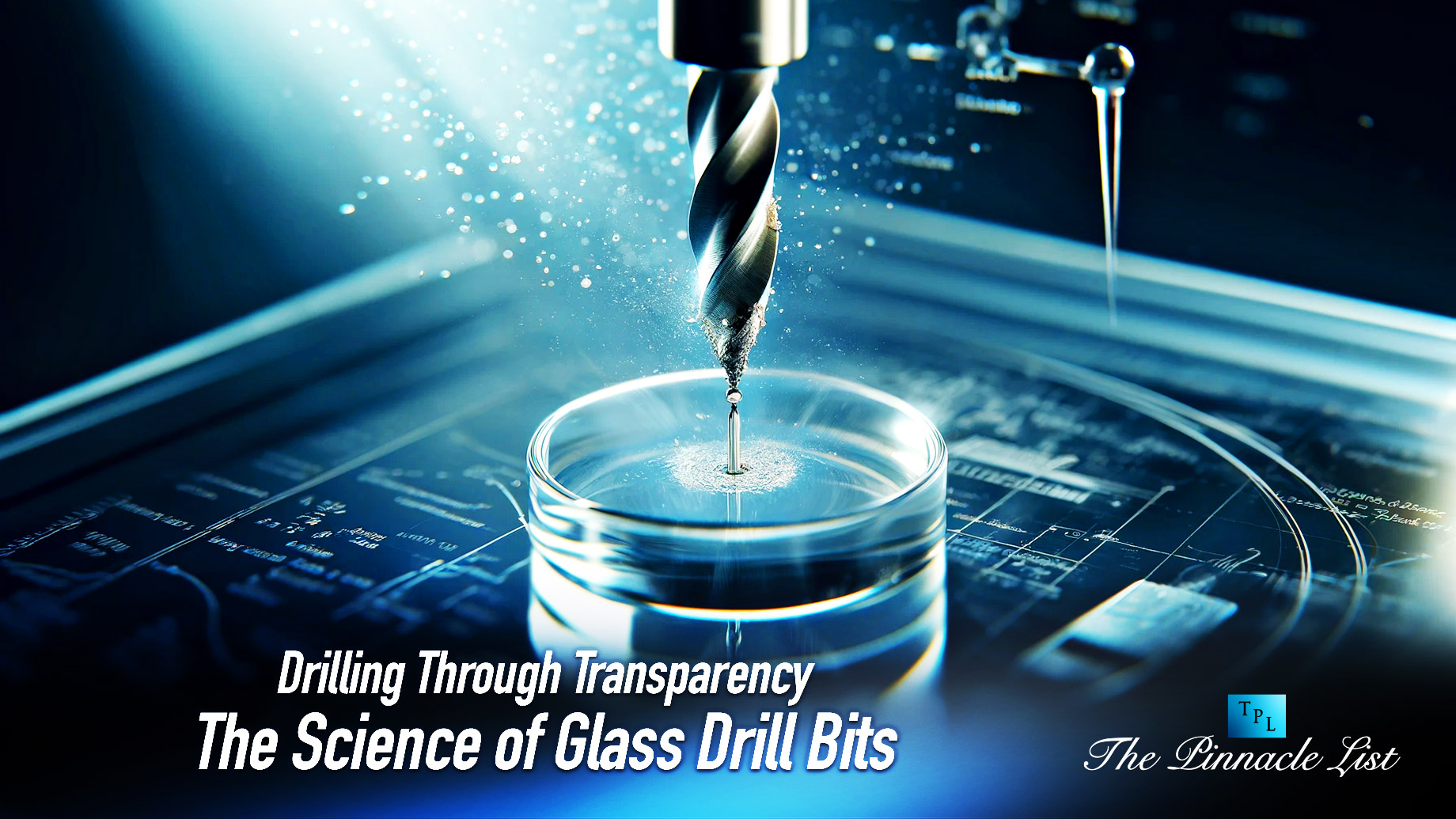
Drilling through glass is not as simple as drilling through other materials. Glass’s unique properties, such as hardness, brittleness, and smooth surface, make it challenging to achieve clean and precise holes without specialized tools. This is where glass drill bits come into play. In this article, we will explore the science behind glass drill bits, exploring their design, functionality, and the factors contributing to their effectiveness in drilling through glass surfaces.
Properties of Glass
Glass is renowned for its transparency and smoothness, but these characteristics make it a difficult material to drill. Its hardness often causes conventional drill bits to fail to make an impact, resulting in chipping or cracking. Additionally, glass’s brittleness means it can shatter under pressure, further complicating the drilling process. Understanding these properties is crucial in selecting the right tools for the job.
Glass also has a low thermal expansion coefficient, meaning it does not expand significantly when exposed to heat. This property makes it susceptible to thermal stress during drilling, especially if the heat generated is not adequately dissipated.
Understanding Glass Drill Bits
Glass drill bits are designed to tackle the challenges of drilling glass. Unlike regular drill bits, which may not be effective or can damage the glass, glass drill bits are engineered with precision and care. They typically feature carbide tips or are diamond-coated, providing the hardness needed to cut through the glass while minimizing the risk of damage.
The design of glass drill bits is critical to their functionality. The tips of these drill bits are often spear-pointed or have a diamond coating, allowing them to create precise and clean holes without causing cracks or chips in the glass surface.
The Science Behind Glass Drilling
The process of drilling through glass involves several scientific principles. Abrasion is key, as the drill bit’s sharp edges gradually wear away the glass to create a hole. Heat generation is also a concern, as excessive heat can cause the glass to crack. Glass drill bits are designed to dissipate heat efficiently, reducing the risk of thermal stress on the glass surface.
The drill bit’s speed and pressure must be carefully controlled when drilling glass. High speeds or excessive pressure can lead to overheating and potential damage to the glass. Lubrication and cooling are essential to keep the drill bit and glass surface at optimal temperatures during drilling.
Types of Glass Drill Bits
Various glass drill bits are available, each suited for different applications. Diamond-tipped bits are highly durable and ideal for drilling hard materials like glass and ceramics. They create clean, precise holes with minimal chipping. Spear-point bits are designed for precision drilling, creating accurate holes without wandering or skidding. Spade bits, also known as paddle bits, are more versatile and can handle a range of materials, including glass, wood, and plastic.
Factors Affecting Drilling Performance
Several factors impact the performance of glass drill bits. Drill speed, pressure, lubrication, and cooling techniques all play a role in achieving optimal results. Slower speeds are generally recommended for drilling glass, along with light pressure, to avoid cracking. Using water or a coolant during drilling helps dissipate heat and lubricate the bit, improving efficiency and reducing the glass damage risk.
The angle of the drill bit also influences drilling performance. A sharper angle is preferred for glass to reduce the risk of skidding or chipping. Additionally, the type of glass being drilled (e.g., tempered, laminated) and its thickness can affect drilling outcomes and require adjustments in drilling parameters.
Safety Considerations
Safety is paramount when working with glass drill bits. Wear protective gear, including safety goggles and gloves, to prevent injuries from glass shards. Secure the workpiece firmly to prevent slipping or movement during drilling. Handle drill tools carefully, especially when working with fragile materials like glass.
In addition to personal protective equipment, proper workspace setup is crucial. Work in a well-ventilated area to avoid inhaling dust or fumes generated during drilling. Keep the work area clean and clutter-free to minimize hazards and distractions.
Applications of Glass Drill Bits
Glass drill bits find applications in a variety of industries and projects. In glasswork, they create holes for hardware installations, such as handles or hinges. Crafters use them for artistic projects involving glass, such as making decorative pieces or jewelry. In construction and home improvement, glass drill bits are essential for installing shower doors or cutting holes for light fixtures.
Glass drill bits are also used in scientific and laboratory settings for drilling glassware, such as beakers, test tubes, and glass panels. Their precision and ability to create clean holes make them invaluable tools in research and experimentation.
Conclusion
Understanding the science of glass drill bits is essential for anyone working with glass materials. By grasping the properties of glass, the design of specialized drill bits, and the factors influencing drilling performance, individuals can achieve precise and clean results while minimizing the risk of damage to the glass surface.
Whether for professional or DIY projects, investing in quality glass drill bits and following safety guidelines ensures a successful drilling experience. Stay informed about advancements in drill bit technology and continue to refine your drilling techniques to achieve optimal results when drilling through transparency with glass drill bits.